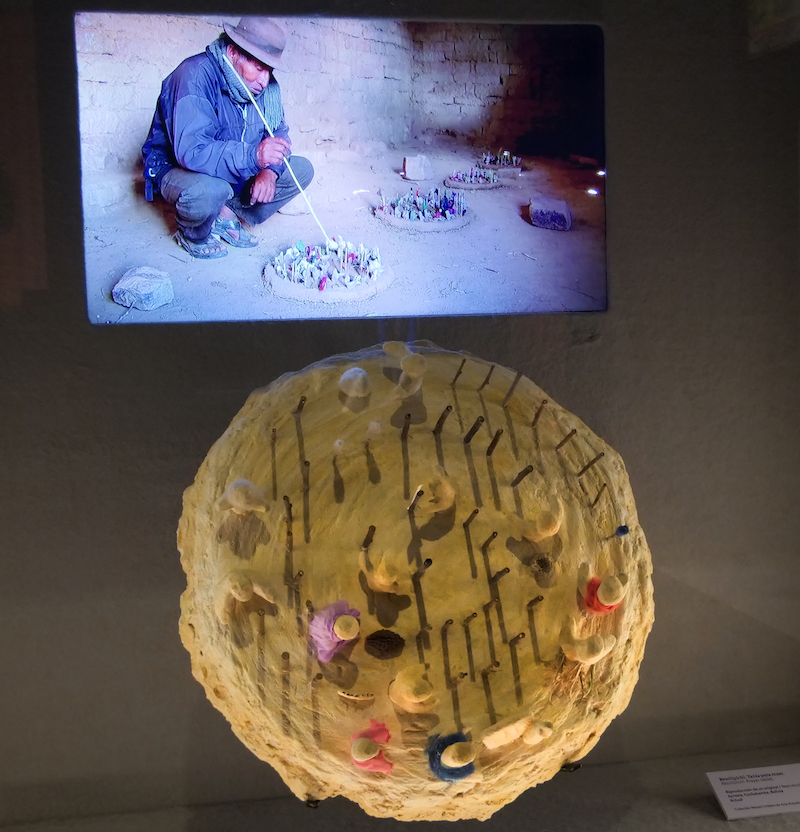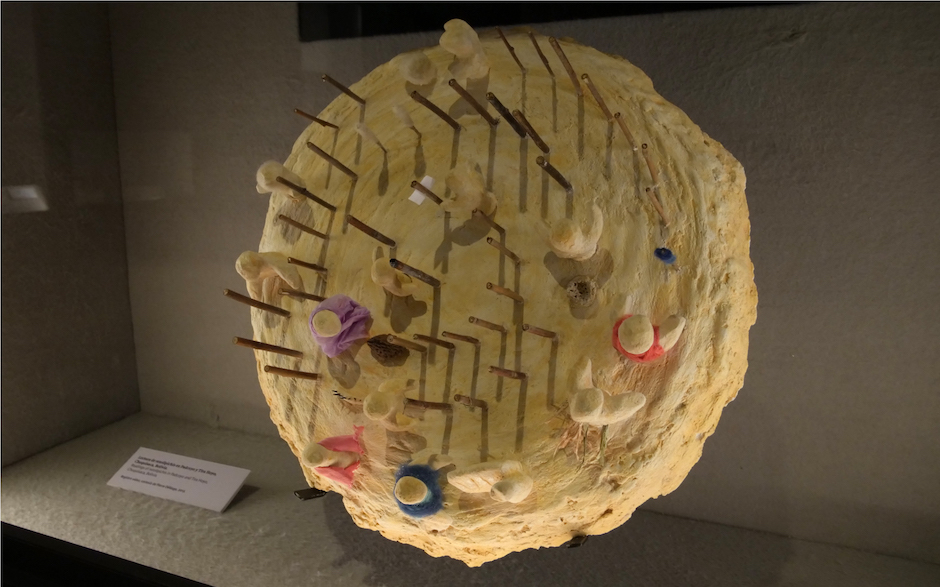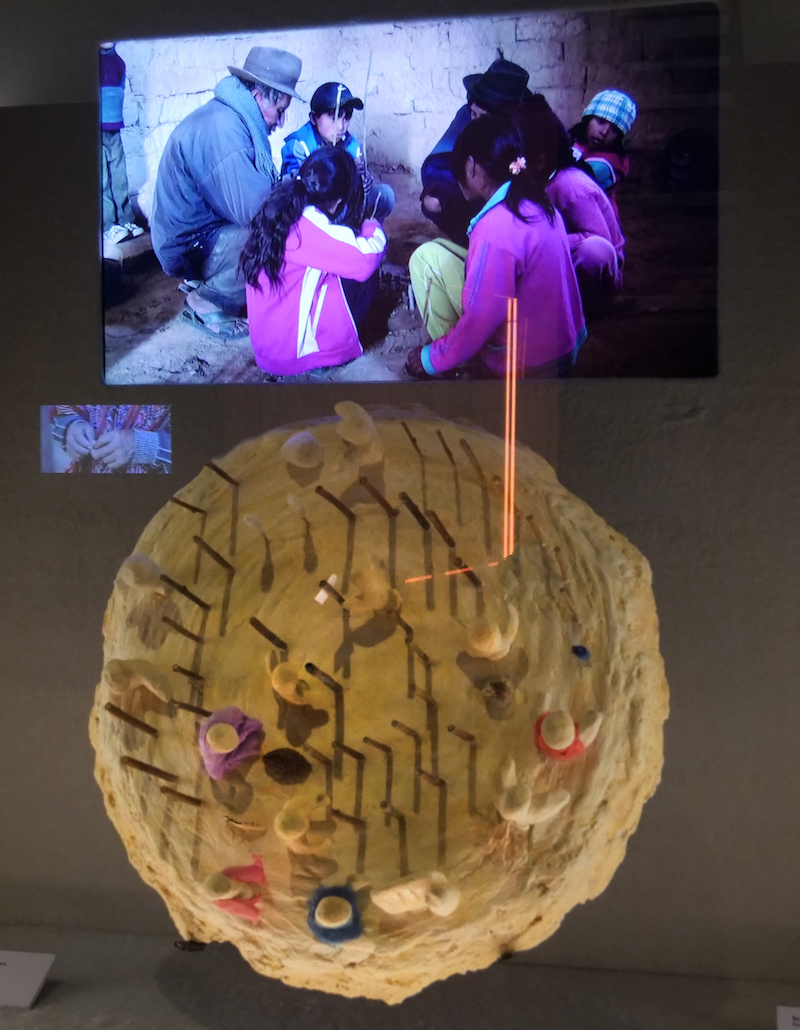
Christian evangelization showcase.

Christian ceremony and ceremonies performed by the community in daily life and social contexts. Alterpiece, wood, Ayacucho, Perú. Colección particular (550 mm, alto).

Musicians scene in the alterpiece (detail).

Market place scene in the alterpiece (detail).

Jesus' birth scene in the alterpiece (detail).

The three spaces of the Christian world. Note the inclusion of Ukhu Pacha or Hell. Sarhua tableau, wood. Ayacucho, Perú. COlección particular (505 x 403 mm)

Creation of the world. Sarhua tableau, wood. Ayacucho, Perú. Colección particular (815 x 300 mm).
The objects presented here show how the efforts to convert indigenous peoples to Christianity were received and transformed by Andean societies, who created new deities such as Adaneva (the male and female principles of creation in the Christian tradition) and representations of the world, in which animals are divided into domestic (kay pacha) and wild (ñawpa pacha or ukhu pacha). The Sarhua tableaux are a gift given by the community to a newly married couple to be placed on beams of their home, while alterpieces made by local artisans show us scenes of daily life in a Christian context.

Rezolipichi. Prayer tablet. Reproduction from an original. Aymara, Cochabamba, Bolivia. Colección Museo Chileno de Arte Precolombino (500 mm, diám.).

Rezolipichi. Prayer tablet. Reproduction from an original. Aymara, Cochabamba, Bolivia. Colección Museo Chileno de Arte Precolombino (500 mm, diám.).

Rezolipichi. Prayer tablet. Reproduction from an original. Aymara, Cochabamba, Bolivia. Colección Museo Chileno de Arte Precolombino (500 mm, diám.).
In several parts of the Colonial Americas missionaries employed mnemonic strategies to convert indigenous peoples to Christianity. One of them was pictographic script, which could be drawn on paper, animal hide (lipichi), or rock, or crafted in three-dimensional objects like this one, which is itself a prayer (rezo), hence its name ‘rezolipichi’. This kind of writing was adopted and adapted by the indigenous peoples themselves and became part of their communication systems.













































